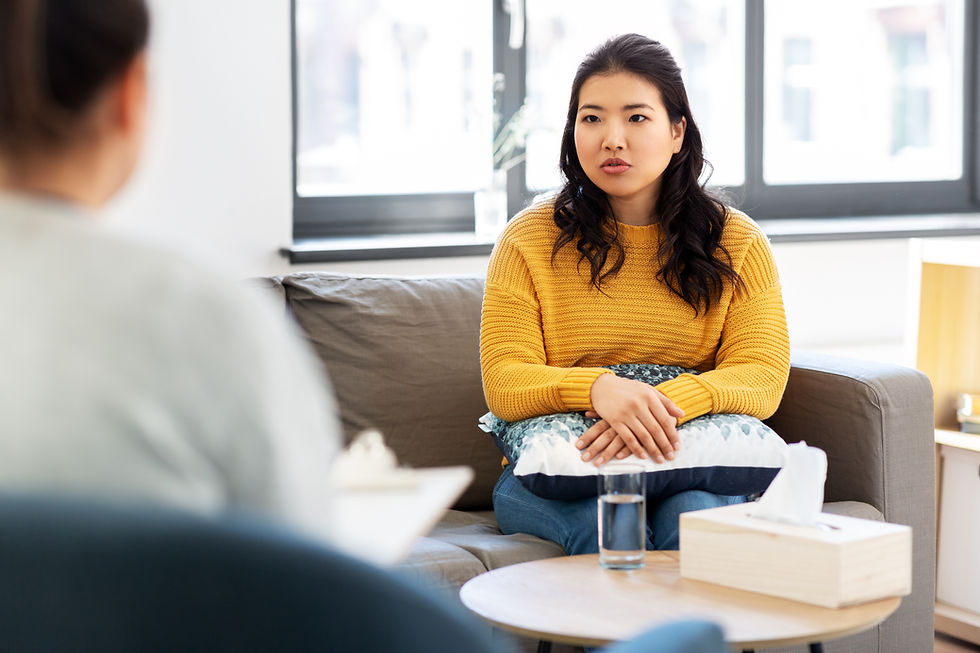Beyond the Thoughts: Using Your Body to Manage Anxiety and Self-Doubt
- Shara A. McGlothan
- Aug 25
- 3 min read

When you experience high anxiety, your mind is often the first thing you notice—the racing thoughts, the endless "what ifs," the difficulty concentrating. But if you were to check in with your body, what would you find? For many, the mental noise is accompanied by physical symptoms like a racing heart, shallow breathing, or a constant state of tension in the jaw, shoulders, or stomach. This can make it difficult to sleep and can lead to a profound feeling of fatigue, all of which compounds the problem.
This is the cycle of anxiety and self-doubt. You have a flood of thoughts that make it difficult to make decisions, and your fear of the outcome leaves you paralyzed. But what you might not realize is that what's happening in your body is often dictating what's happening in your mind, and vice versa.
The Body's Internal Alarm System
Your brain has an internal alarm system, the amygdala. Its job is to detect threats and prepare your body to fight, flee, or freeze. This system is a powerful and essential part of your survival. In dangerous situations, it floods your body with hormones that cause your heart to race and your breath to quicken, giving you the energy to respond.
The problem arises when this alarm system is triggered not by a physical threat, but by a perceived one—a critical thought, a difficult memory, or a moment of uncertainty. The internal alarm goes off, and your body reacts as if you were in real danger. This can be extremely uncomfortable and, for those with chronic self-doubt, it can further reinforce the feeling that you are not safe or that you can't trust yourself to handle a situation. This leads to a vicious cycle: the physical symptoms of anxiety reinforce your self-doubt, which in turn fuels more anxious thoughts.
When "Just Breathing" Isn't Enough to Manage Anxiety
You've likely heard the advice to "just take a deep breath" or "try to calm down." Mindfulness strategies, coping skills, and grounding techniques are indeed powerful tools. They give us a way to use our bodies to interrupt the alarm system and tame the physical sensations of anxiety. By focusing on the breath, feeling our feet on the floor, or noticing the sensations of our hands, we send a signal to the brain that we are, in fact, safe.
However, many people find these strategies ineffective if they are solely relying on them. When we only focus on managing the physical symptoms without extending curiosity to the source of our anxiety, we miss a critical opportunity for lasting change. We may feel better in the moment, but we don't build the confidence to navigate the situation in the future.
A Holistic Path to Self-Confidence
True confidence is built not by suppressing anxiety, but by understanding it. This is where your body becomes your guide. A somatic approach goes beyond the surface-level symptoms and explores the deeper connection between your thoughts, emotions, and bodily sensations.
Instead of just trying to "get rid of" the anxiety, we work together to:
Listen to the Story in Your Body: We'll tune into what your body is trying to tell you. Is that tension in your stomach connected to a feeling of dread? Is that shallow breath linked to a fear of being seen or heard?
Explore the "Why" with Curiosity: We'll compassionately explore why your internal alarm system is being triggered. Is it an old pattern from childhood? Is it a part of you trying to protect you from something?
Build Your Capacity to Regulate: We'll practice grounding and mindfulness, not as a quick fix, but as a way to build a greater sense of safety within your own body. As you learn to soothe your own nervous system, you build an unshakeable sense of confidence in your ability to take care of yourself.
When you learn to understand the root of your anxiety—and have the skills to regulate your body's response—you are no longer a victim of your internal alarm system. Instead, you become the compassionate and confident guide who can navigate any situation that comes your way.
If you’re ready to stop fighting with your body and learn to work with it to build lasting confidence, I invite you to reach out.




Comments